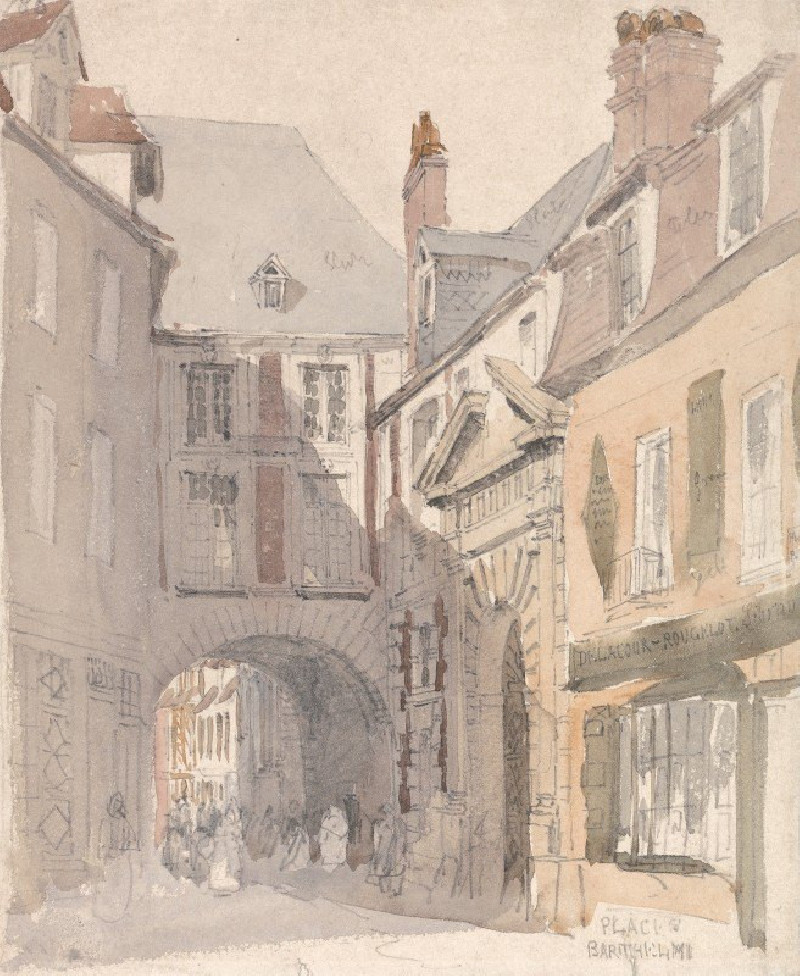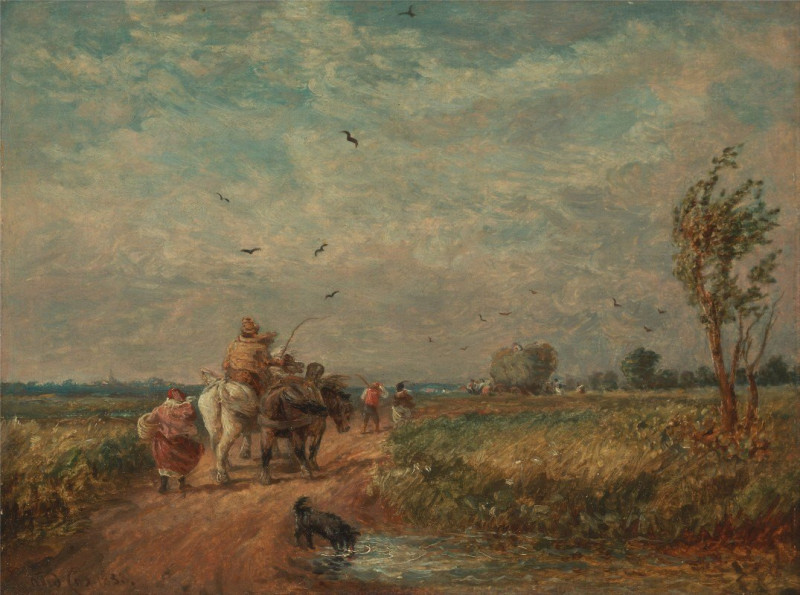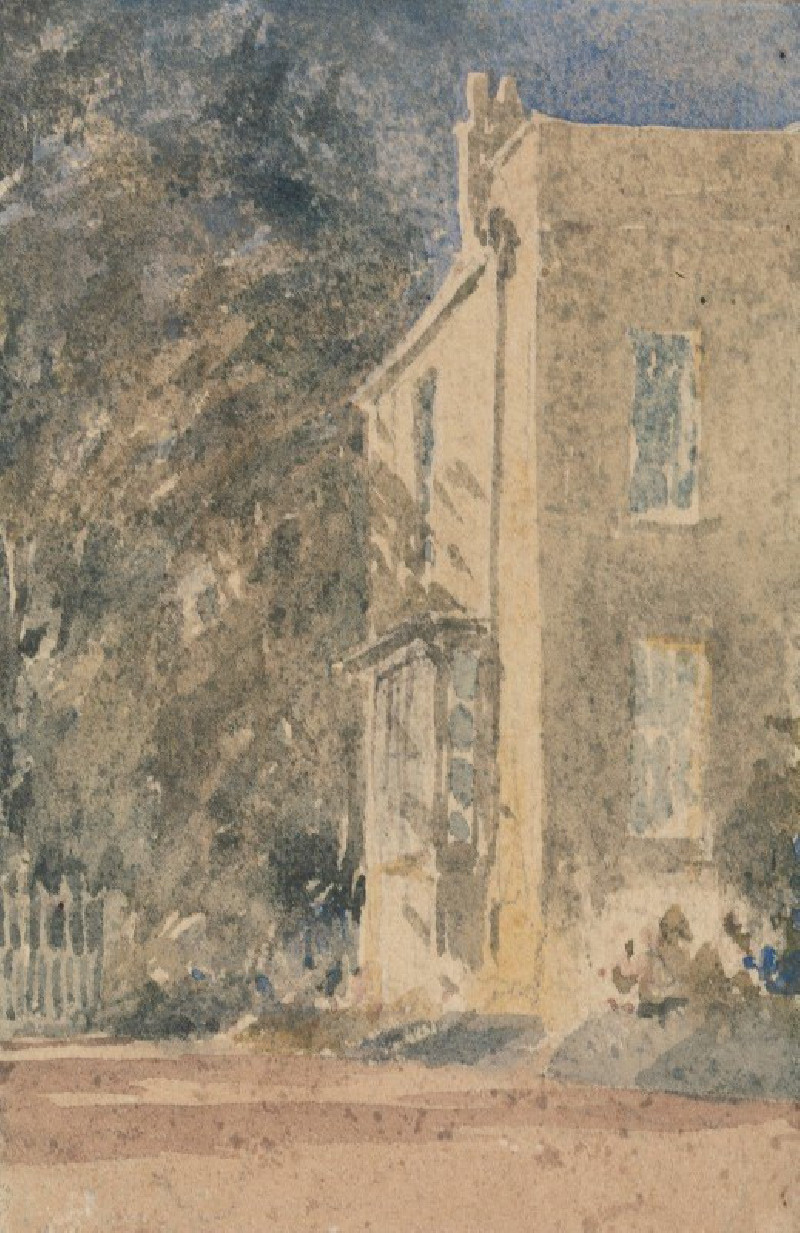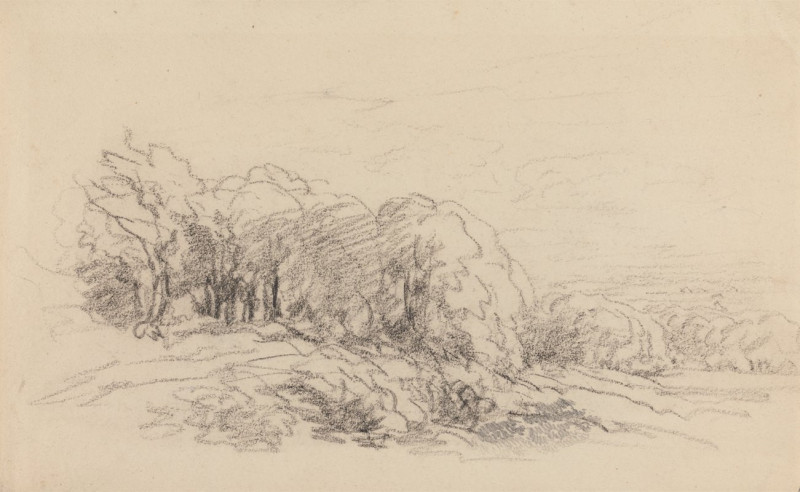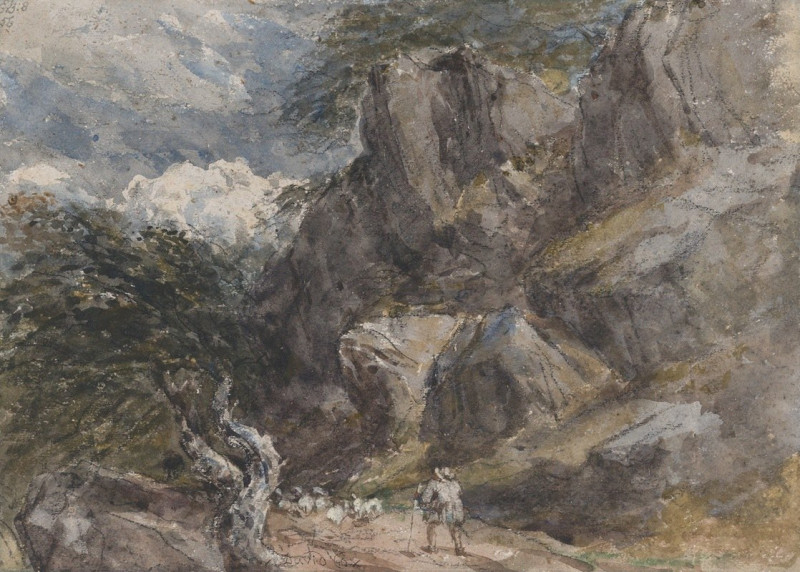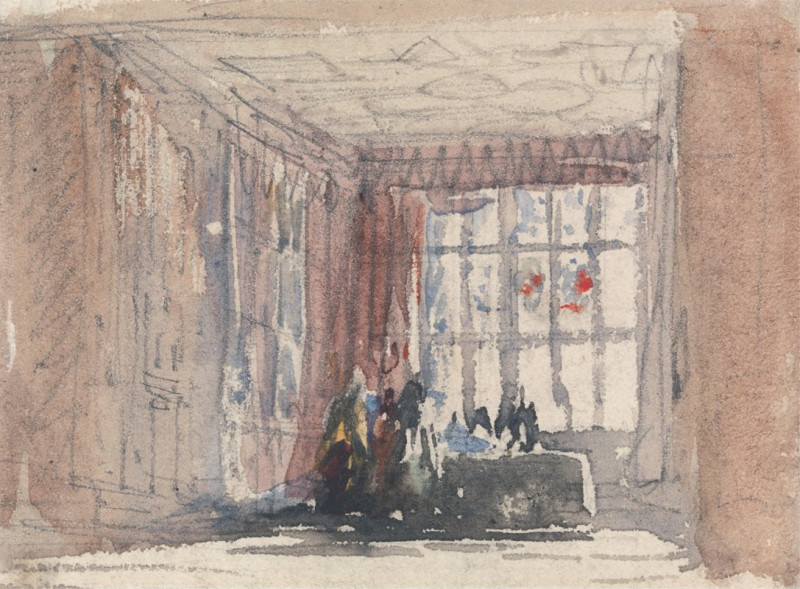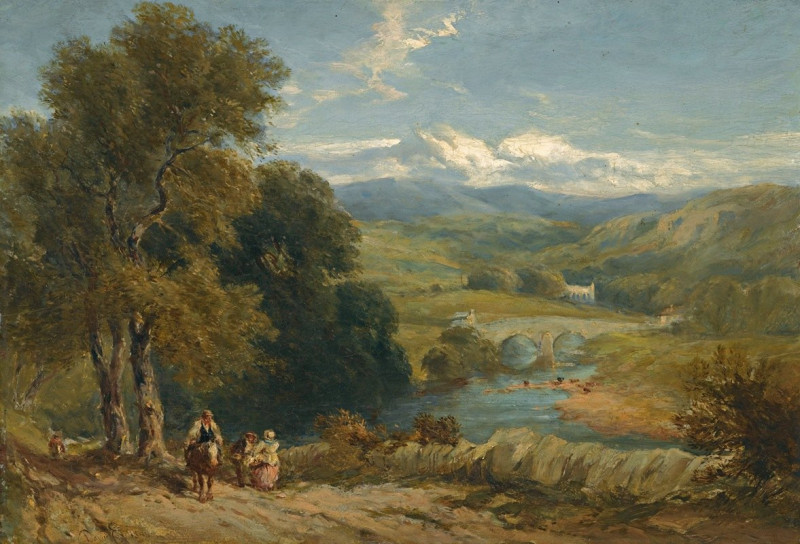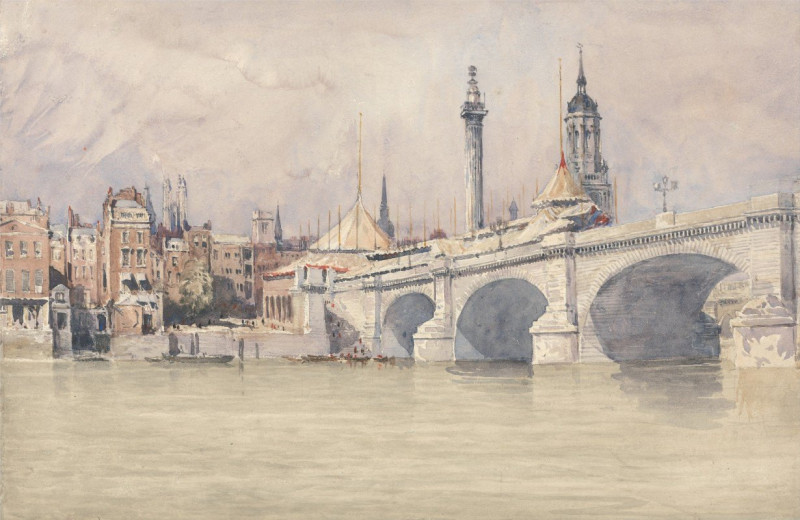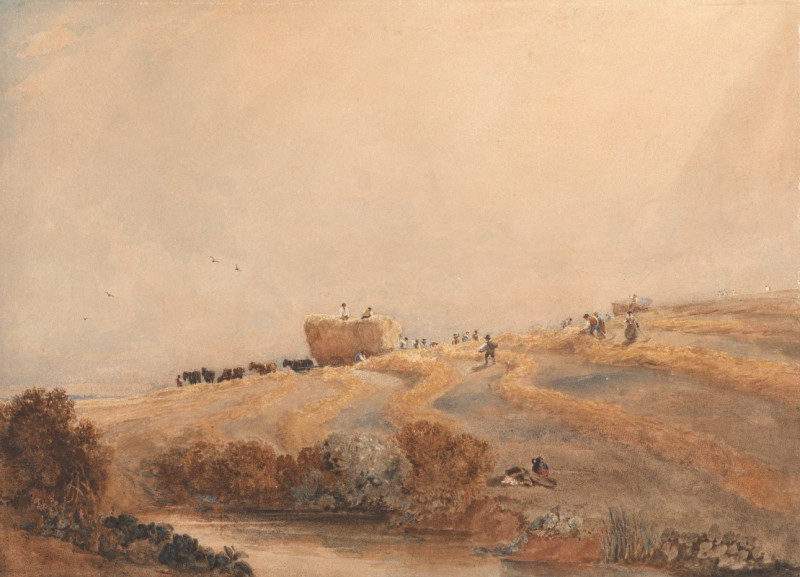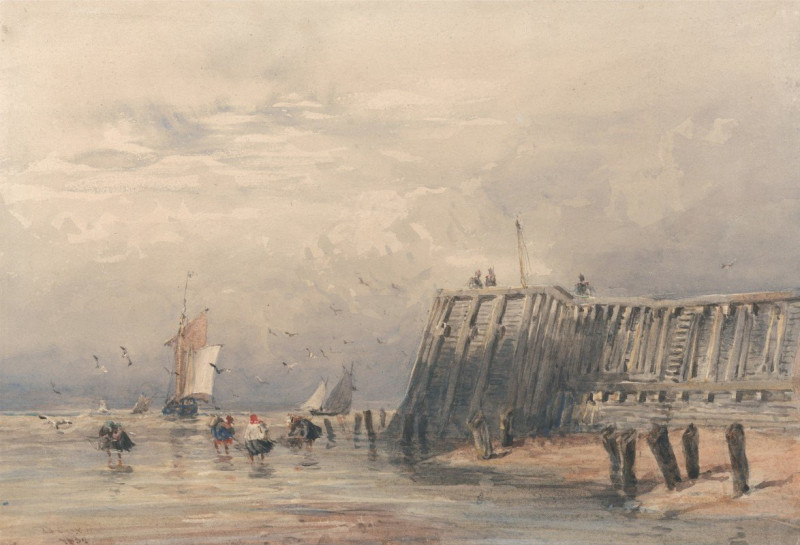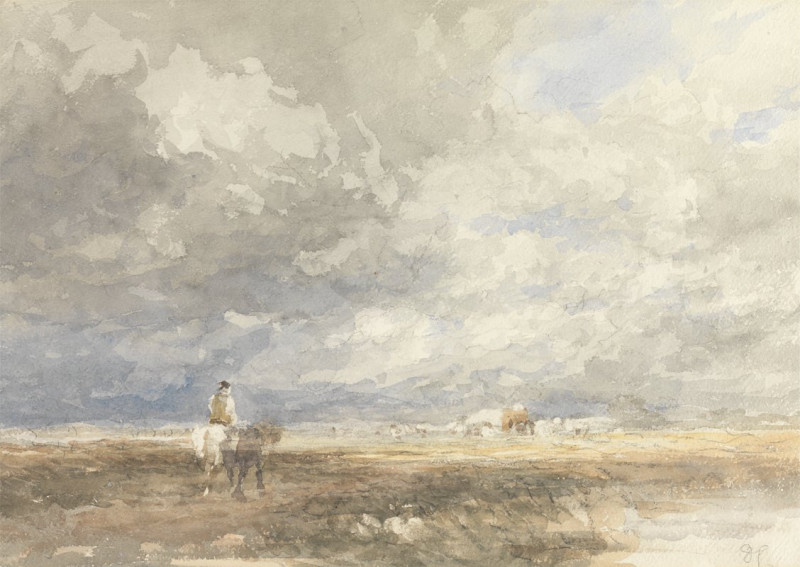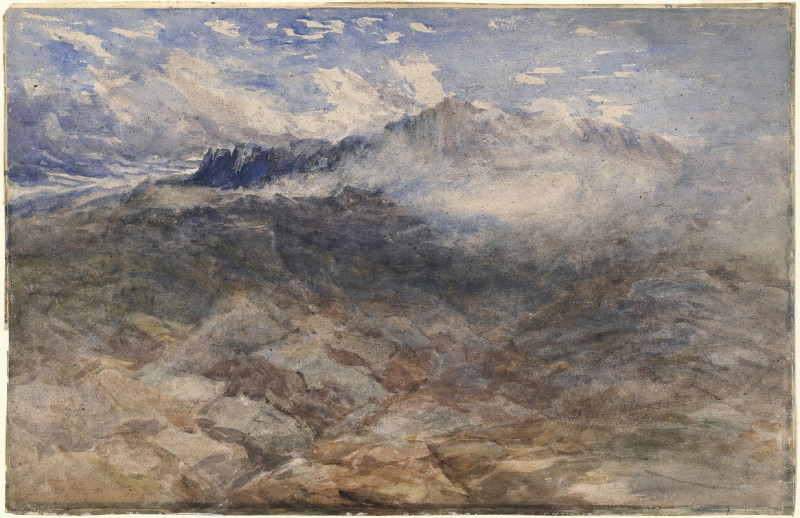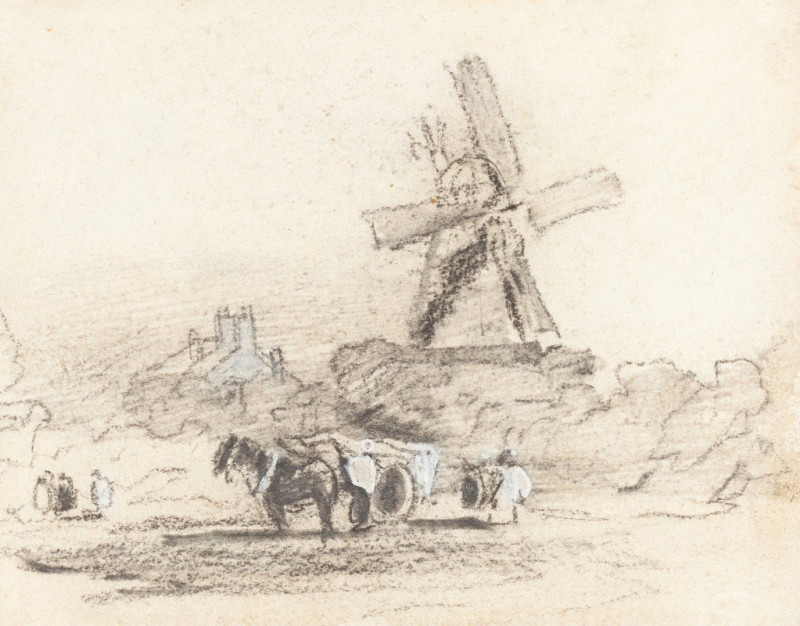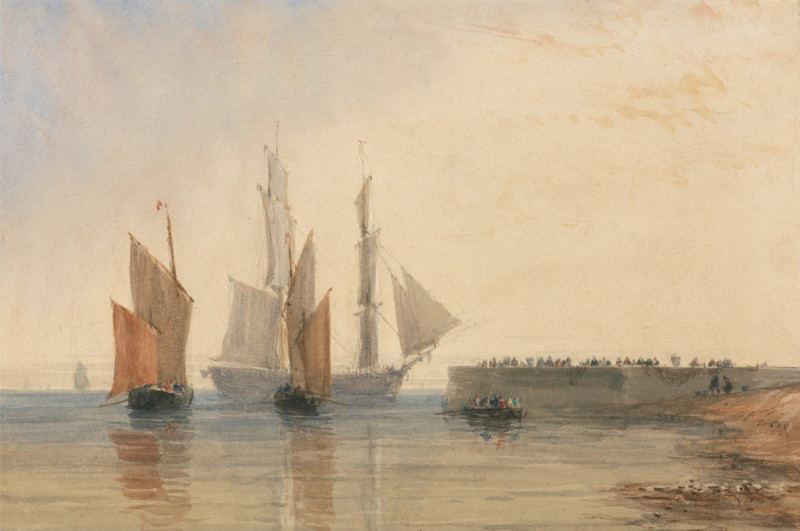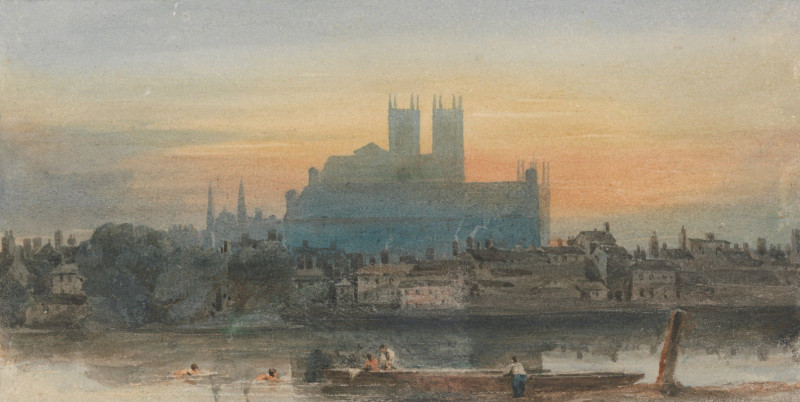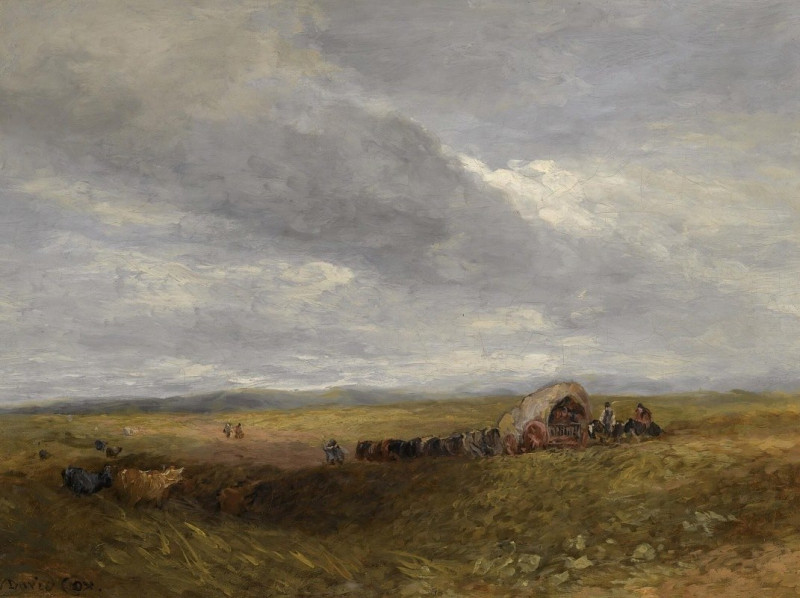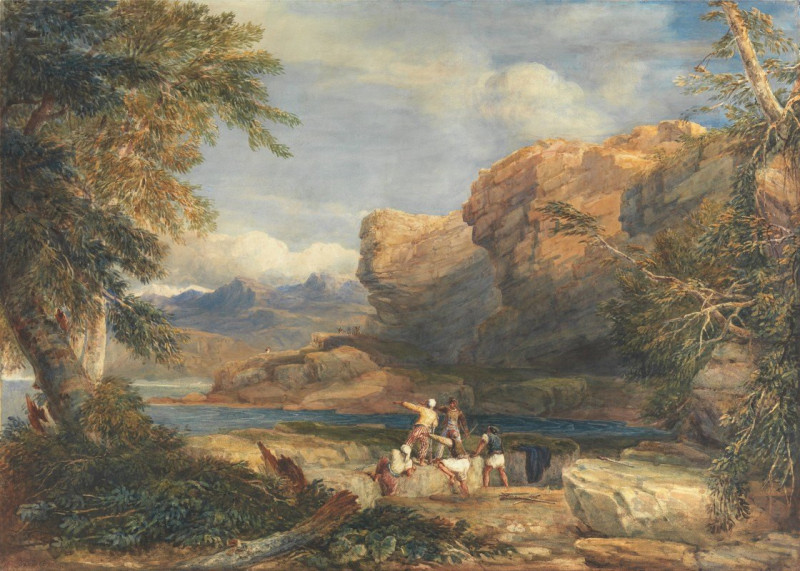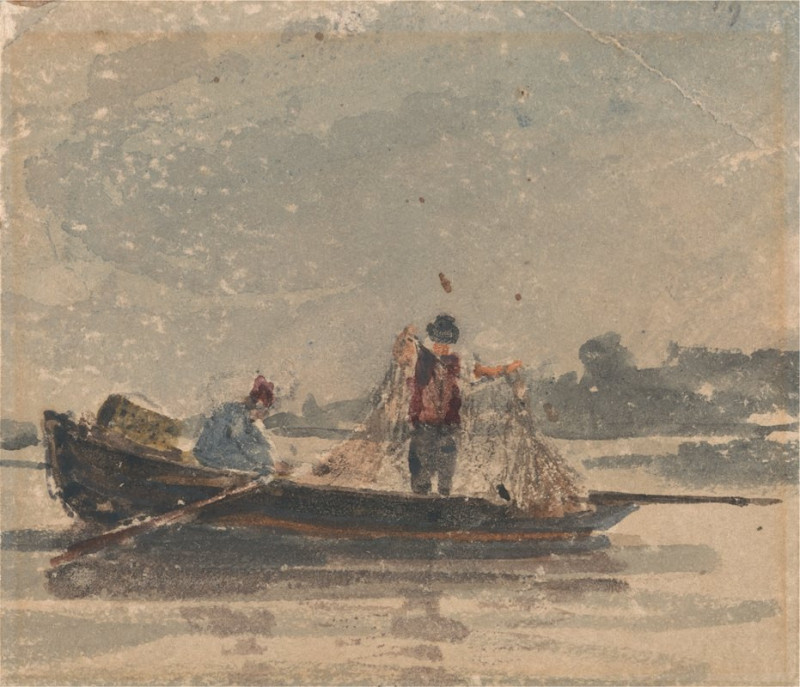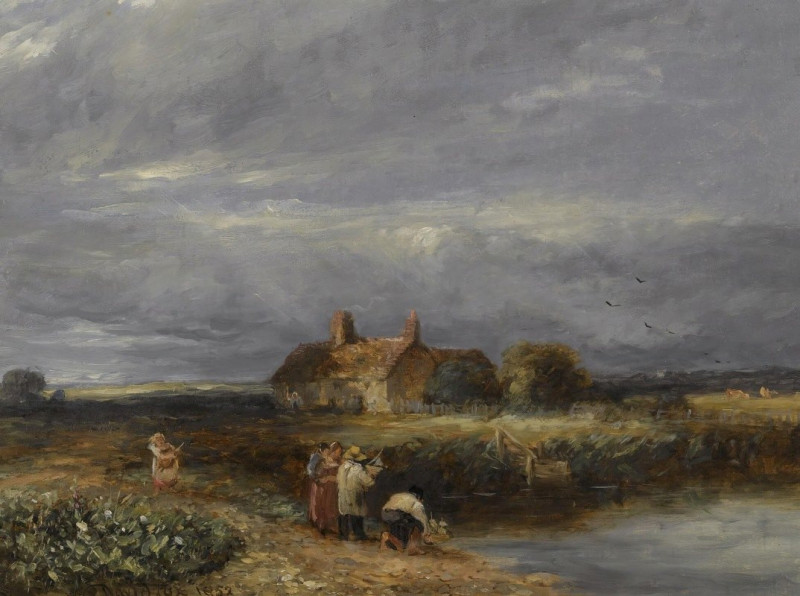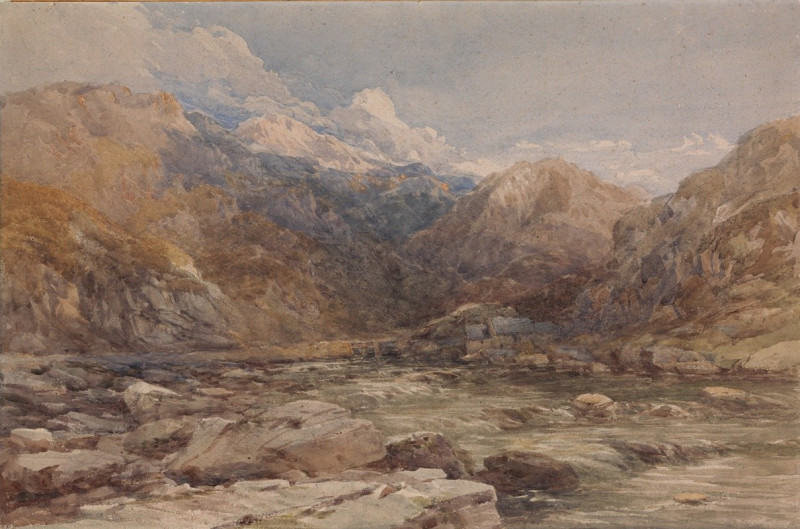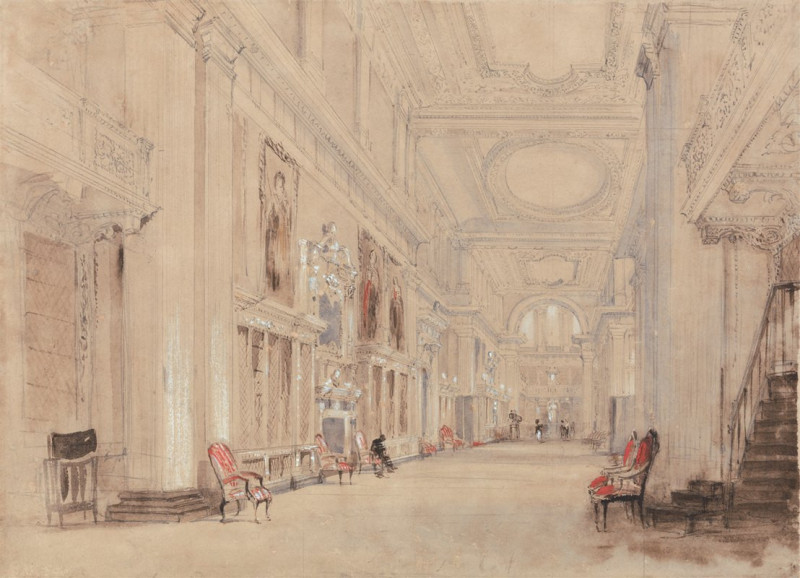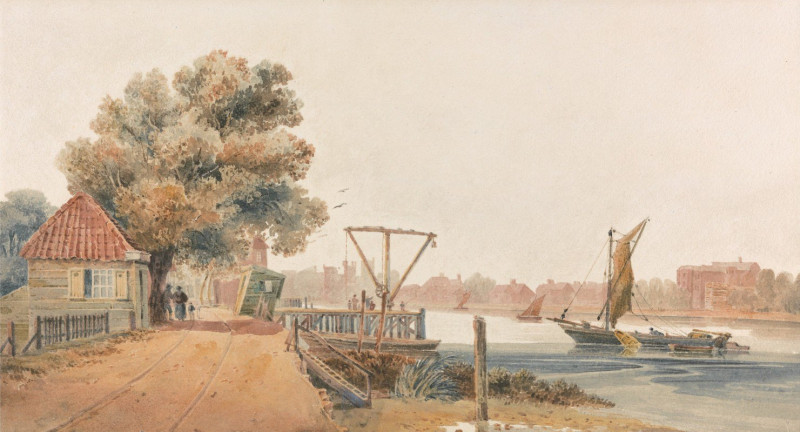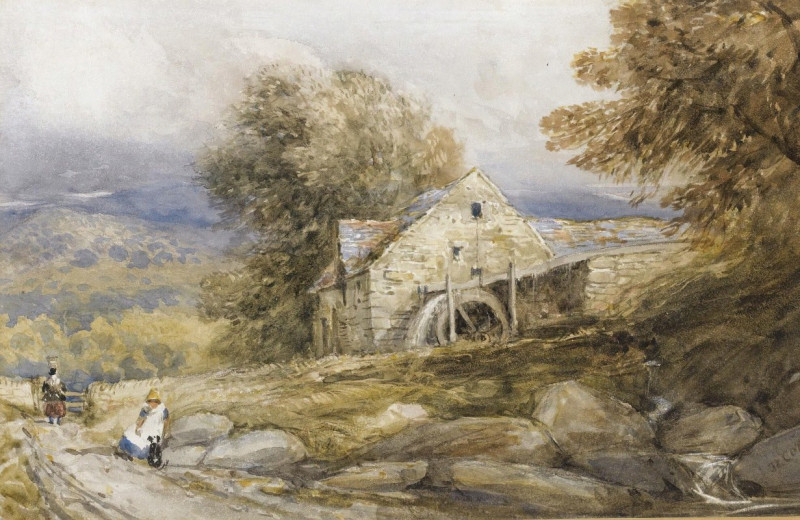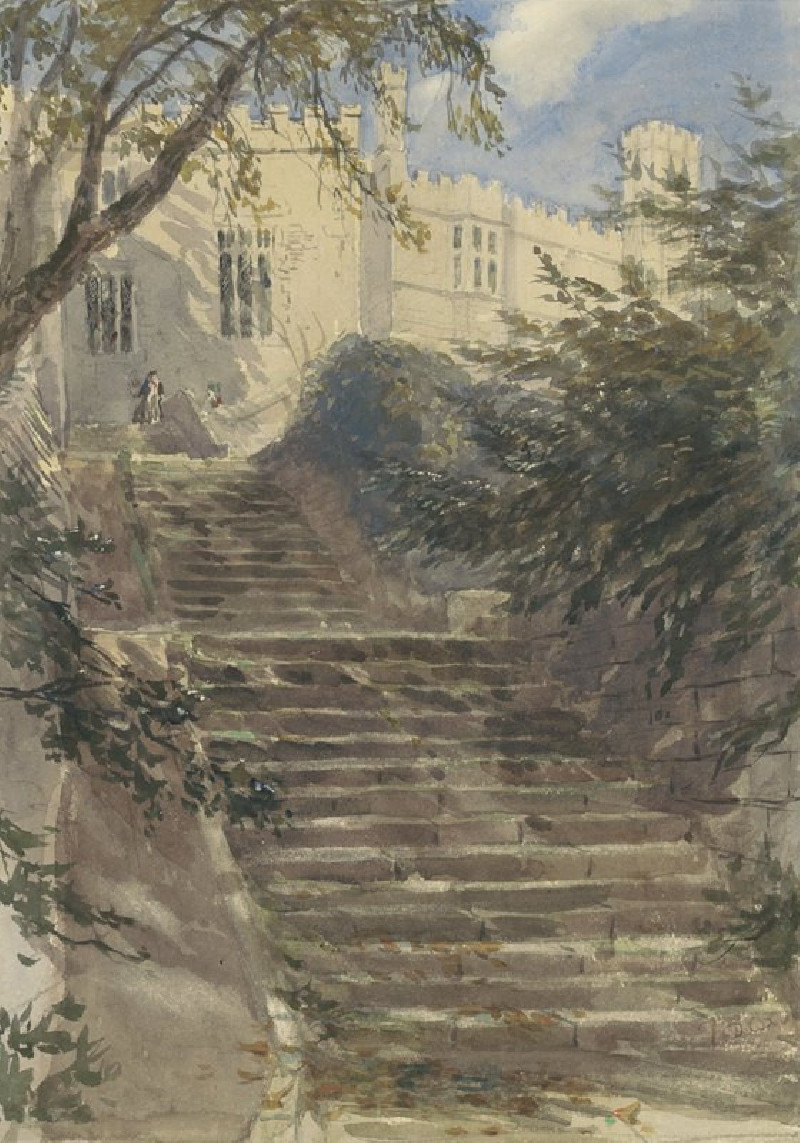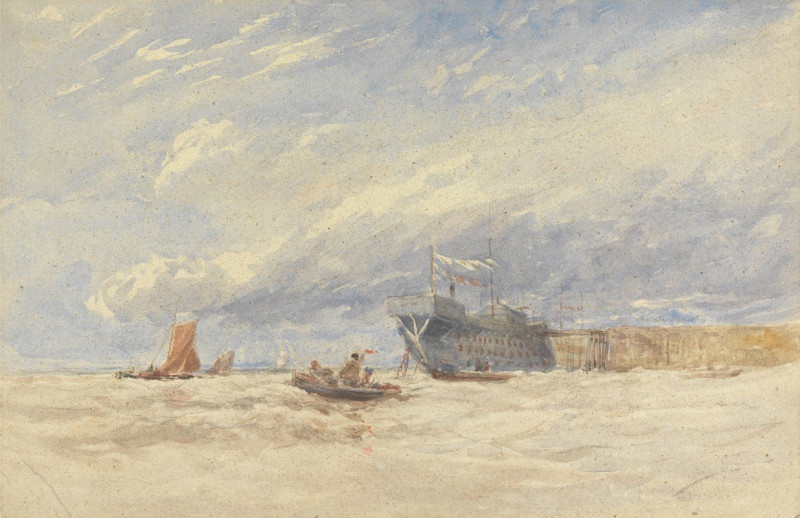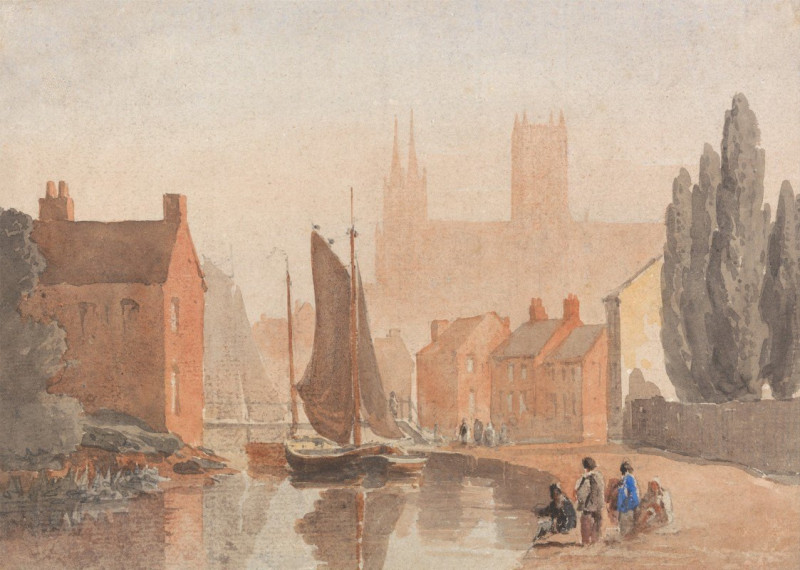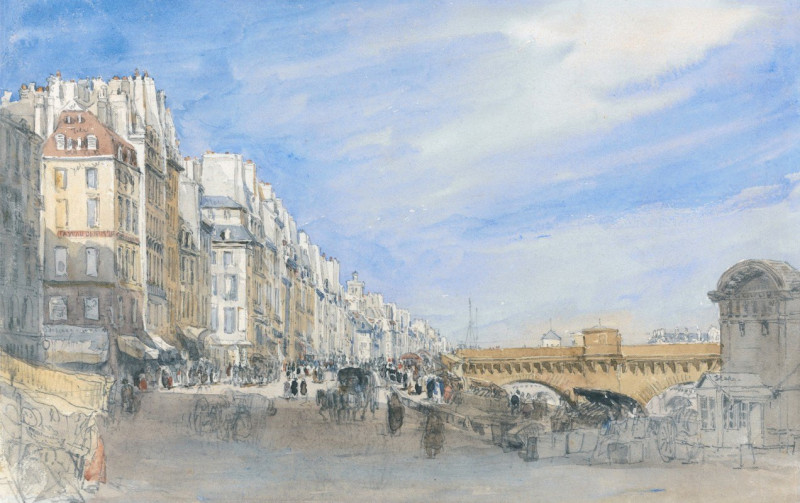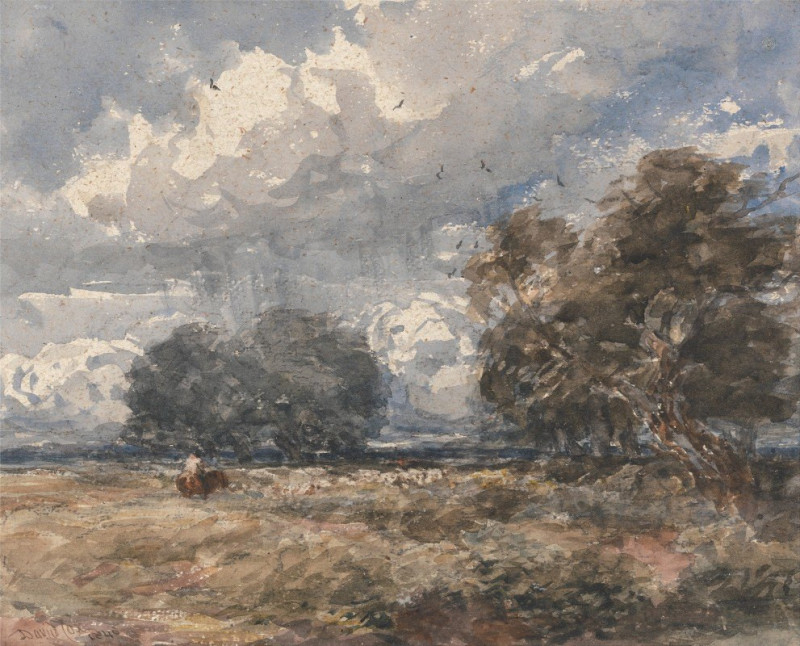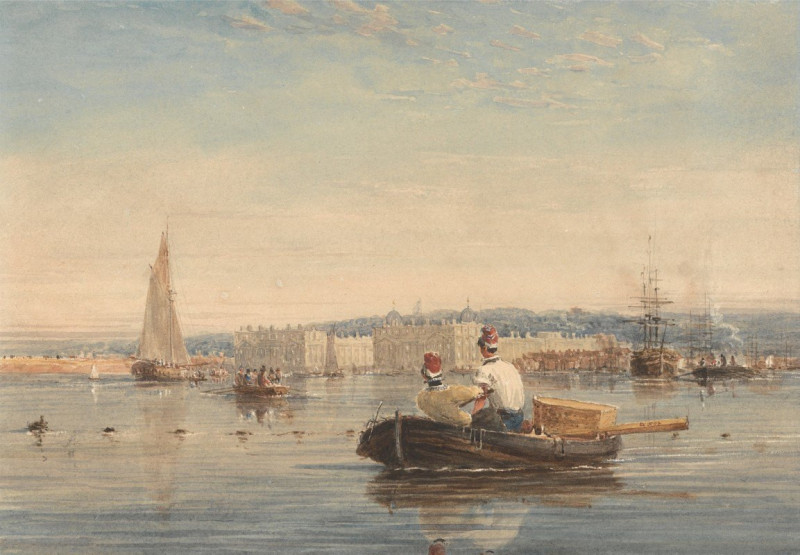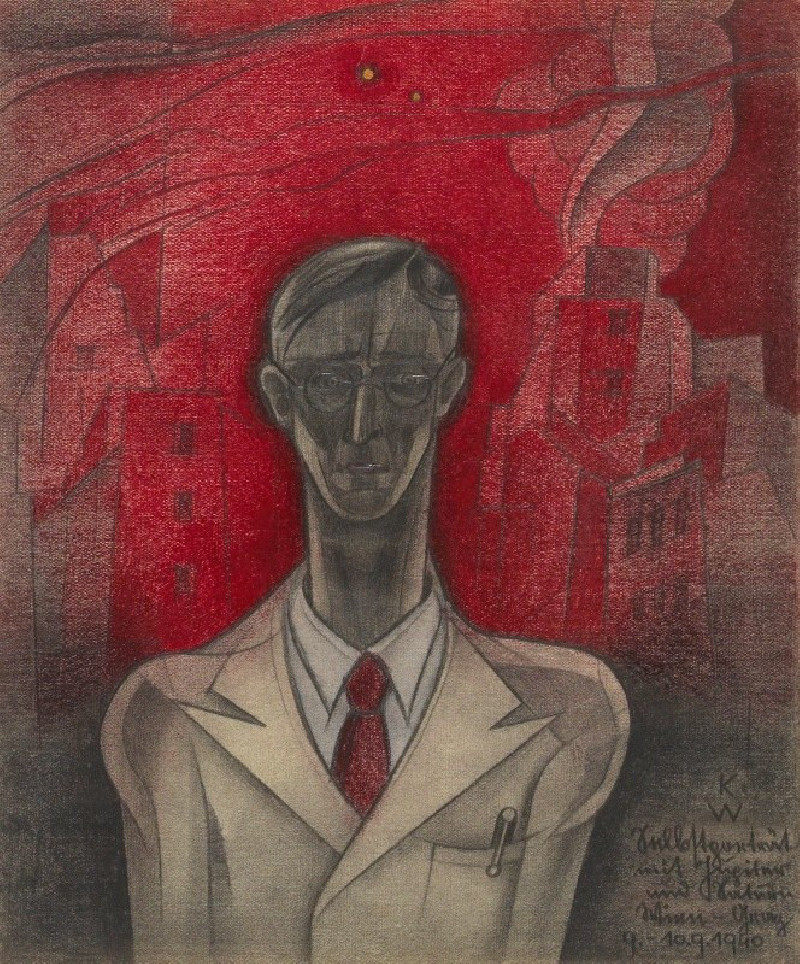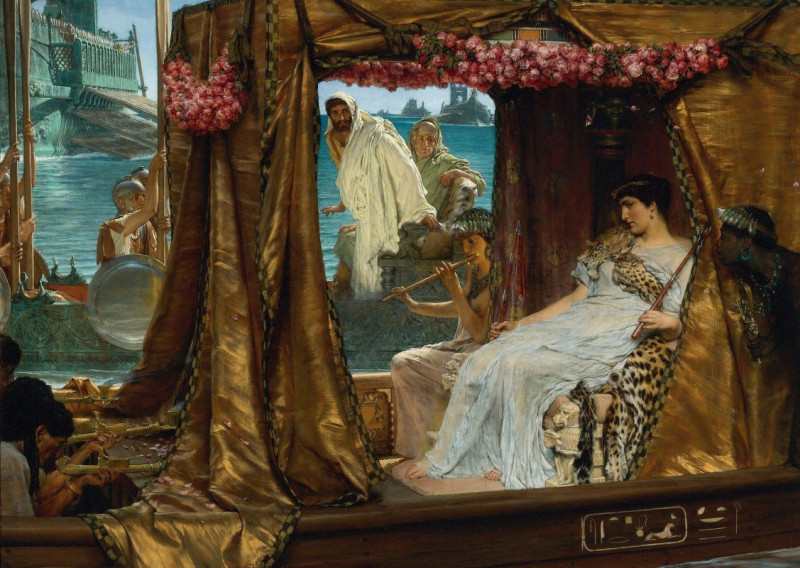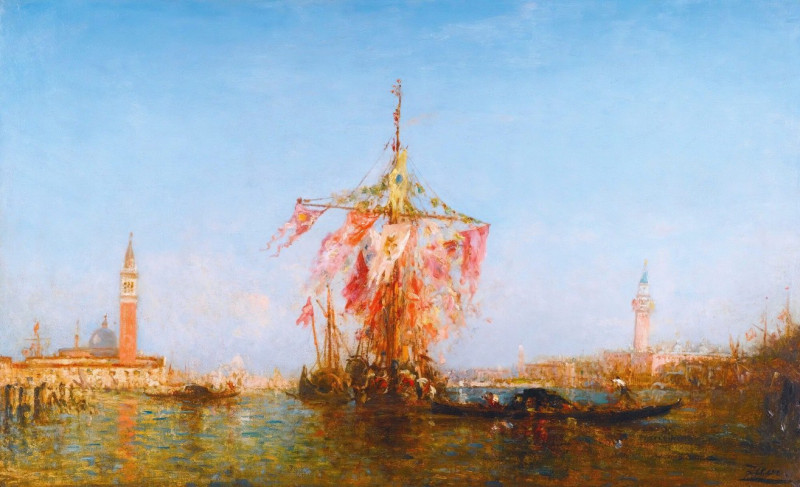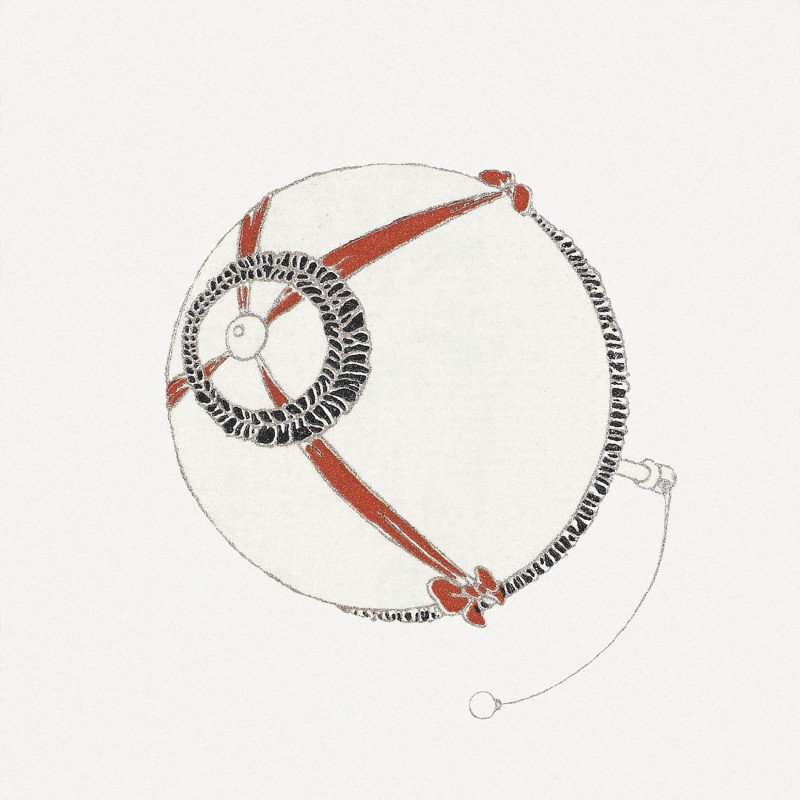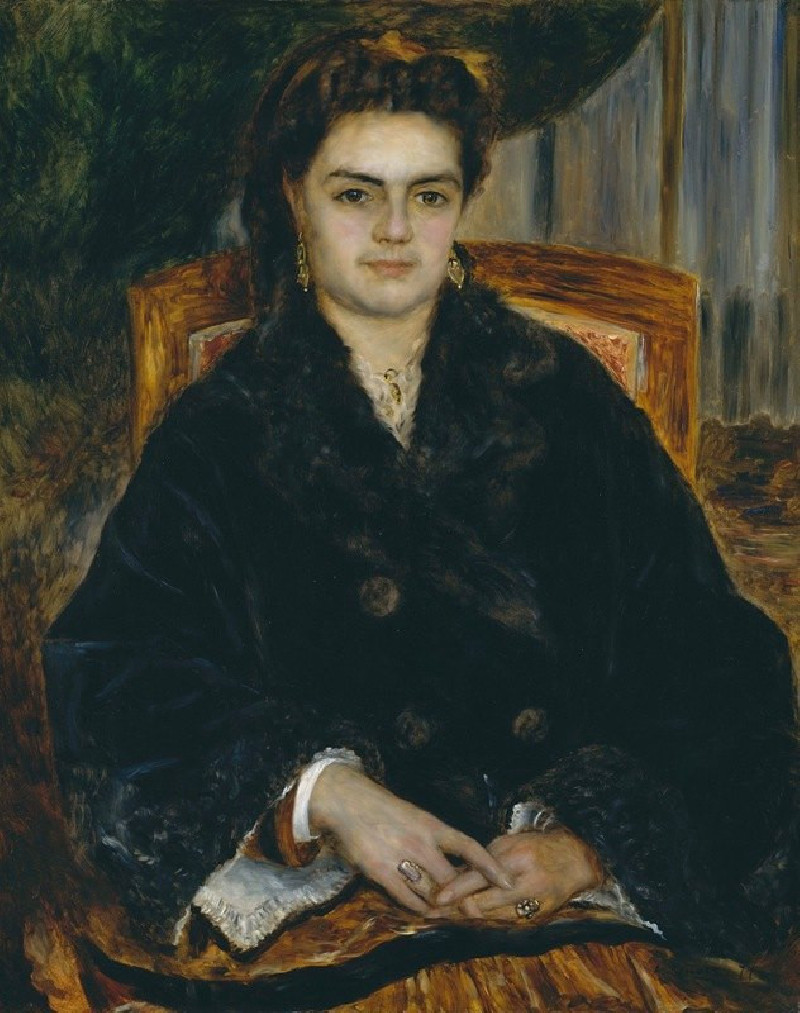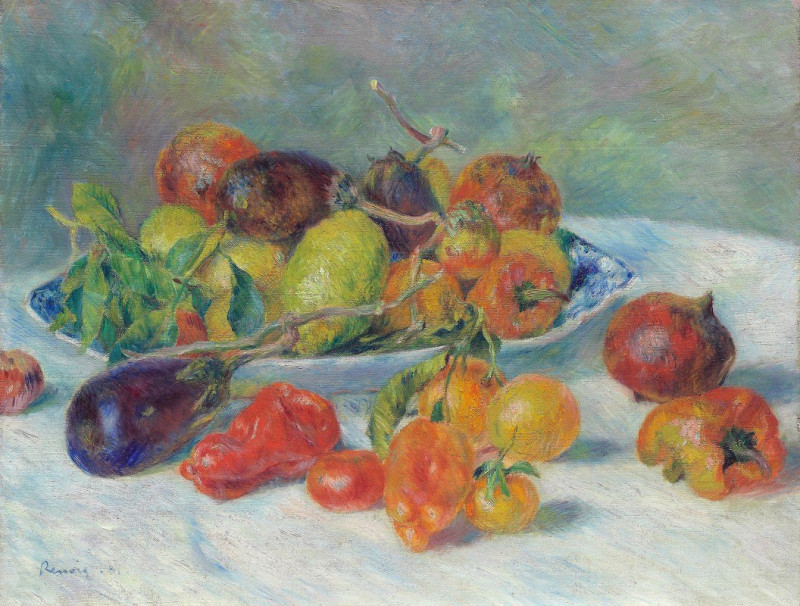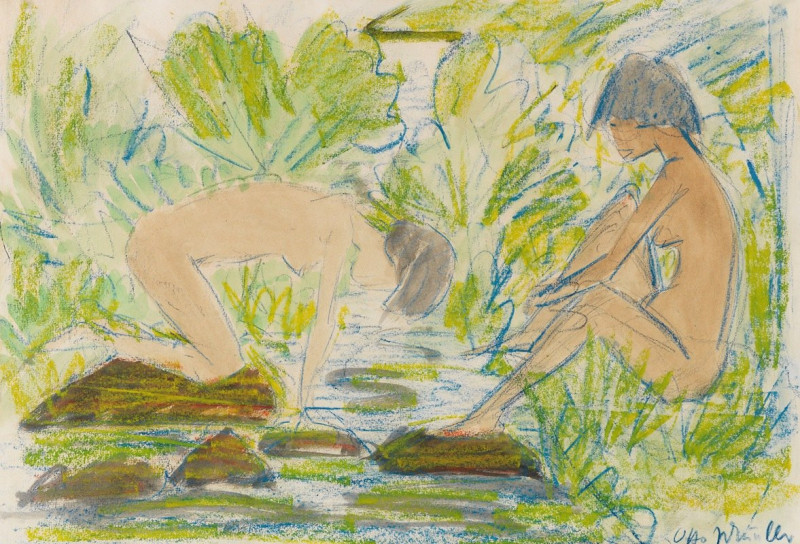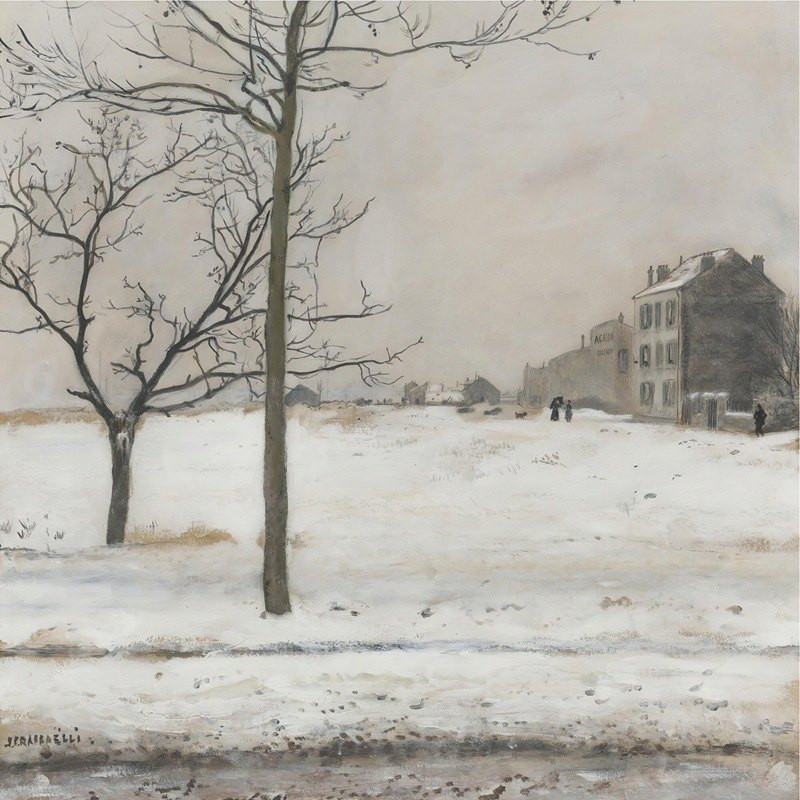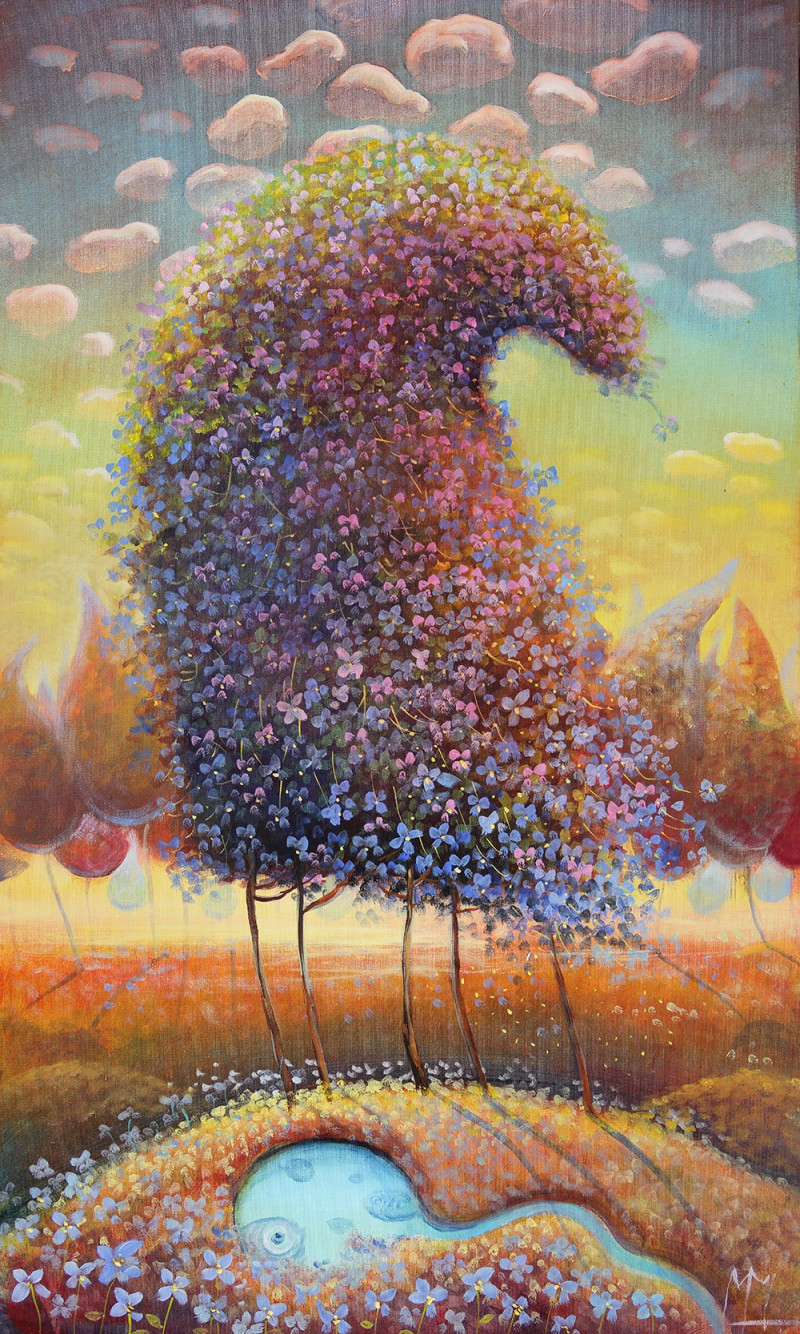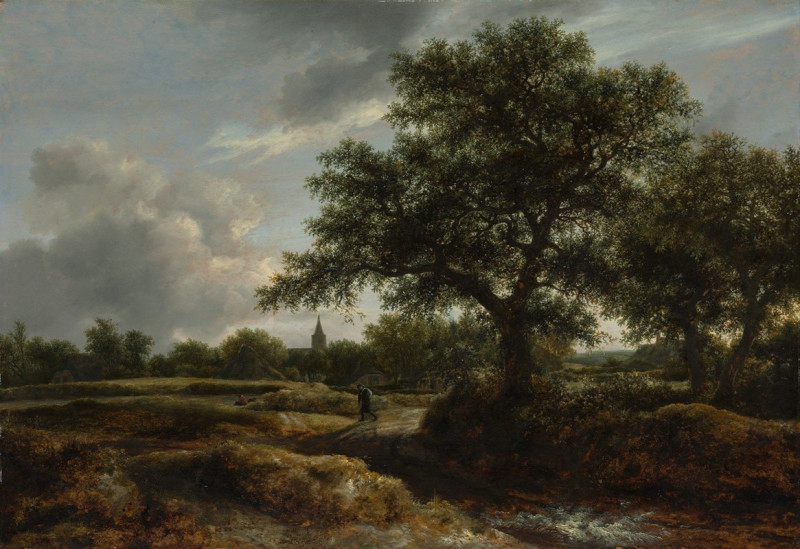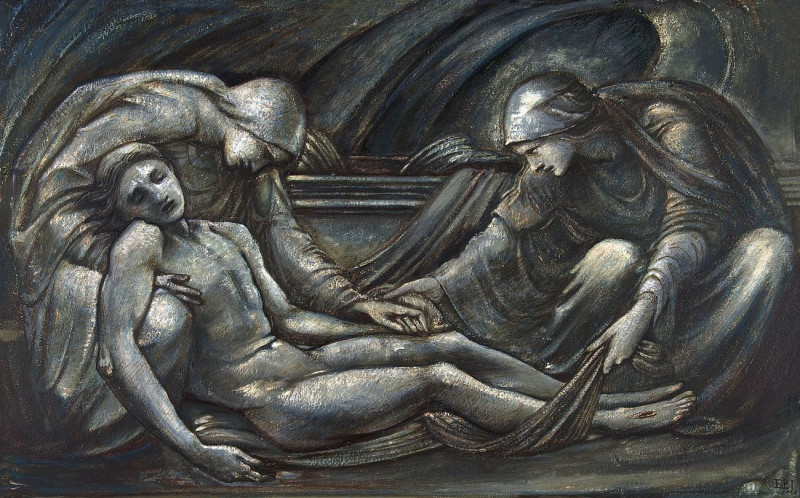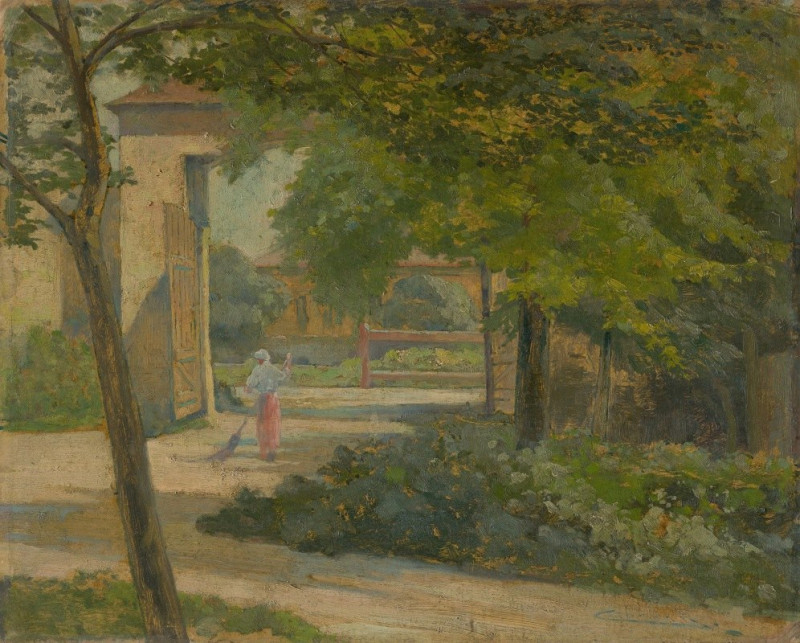Place St. Barthélemy, Rouen (1829)
Technique: Giclée quality print
Recommended by our customers
More about this artwork
This evocative watercolor painting, titled "Place St. Barthélemy, Rouen" (1829) by David Cox, captures a bustling moment in the historic city center of Rouen, France. The artist’s skillful use of light and shadow brings to life the architectural detail of the buildings that line the square, featuring a mixture of residential homes and shops. The eye is drawn towards the arched entryway in the center, leading the viewer into a lively market scene depicted in delicate, almost ethereal strokes.In the foreground, shoppers and townsfolk meander and engage, depicted in Cox’s signature loose yet confident style, conveying movement and the lively atmosphere of a busy street scene. The light, almost washed-out color palette suggests a bright, clear day, infusing the scene with a sense of airiness and openness. Cox’s attention to structural detail—from the half-timbered facades to the slate roofs—subtly contrasts with the transient, fluid nature of the human figures, capturing a moment of daily life in 19th century Rouen with both charm and historical authenticity.
Delivery
Returns
David Cox (29 April 1783 – 7 June 1859) was an English landscape painter, one of the most important members of the Birmingham School of landscape artists and an early precursor of Impressionism.
He is considered one of the greatest English landscape painters, and a major figure of the Golden age of English watercolour.
Although most popularly known for his works in watercolour, he also painted over 300 works in oil towards the end of his career, now considered "one of the greatest, but least recognised, achievements of any British painter."
His son, known as David Cox the Younger (1809–1885), was also a successful artist.

